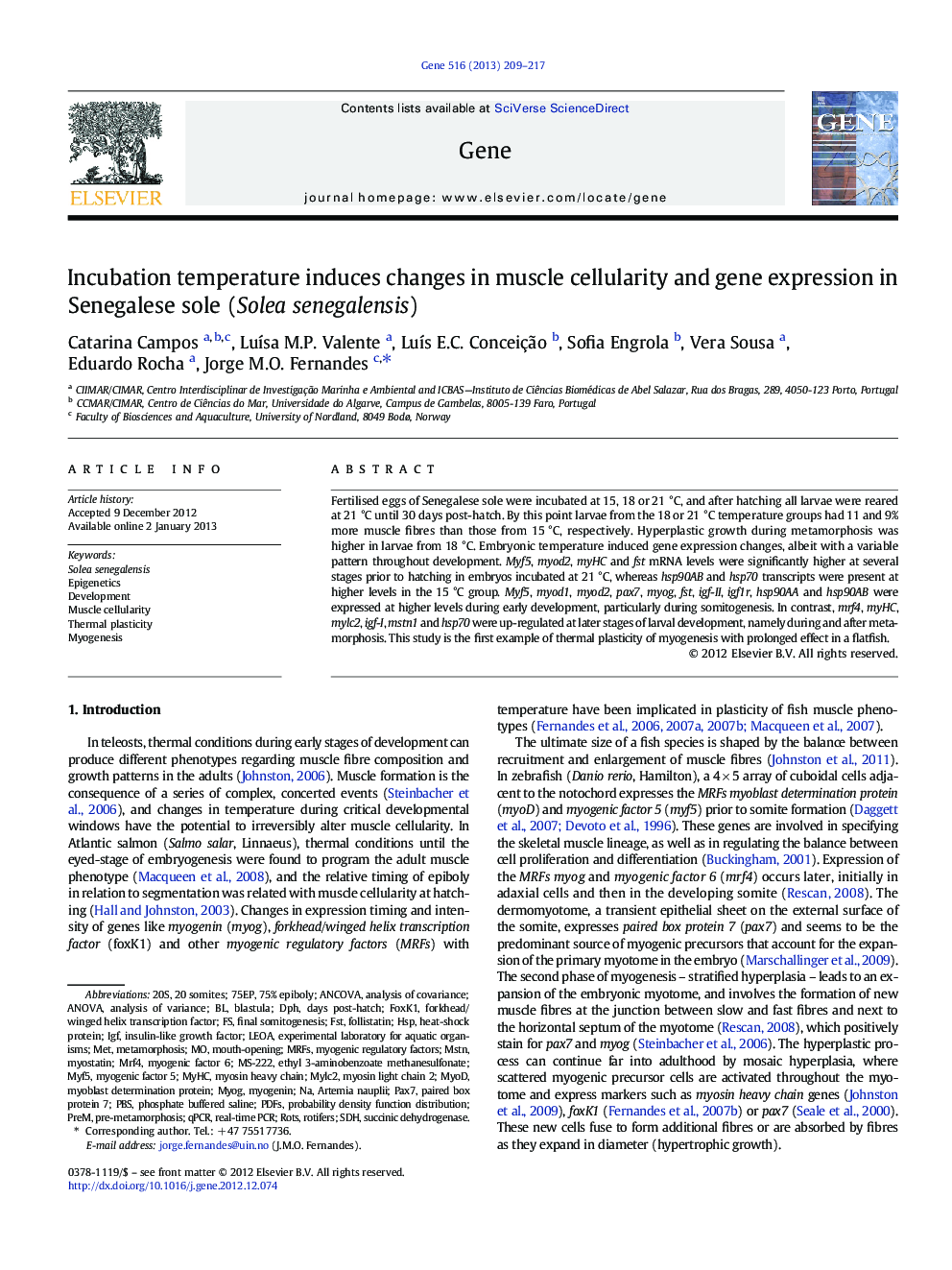| Article ID | Journal | Published Year | Pages | File Type |
|---|---|---|---|---|
| 2817405 | Gene | 2013 | 9 Pages |
Fertilised eggs of Senegalese sole were incubated at 15, 18 or 21 °C, and after hatching all larvae were reared at 21 °C until 30 days post-hatch. By this point larvae from the 18 or 21 °C temperature groups had 11 and 9% more muscle fibres than those from 15 °C, respectively. Hyperplastic growth during metamorphosis was higher in larvae from 18 °C. Embryonic temperature induced gene expression changes, albeit with a variable pattern throughout development. Myf5, myod2, myHC and fst mRNA levels were significantly higher at several stages prior to hatching in embryos incubated at 21 °C, whereas hsp90AB and hsp70 transcripts were present at higher levels in the 15 °C group. Myf5, myod1, myod2, pax7, myog, fst, igf-II, igf1r, hsp90AA and hsp90AB were expressed at higher levels during early development, particularly during somitogenesis. In contrast, mrf4, myHC, mylc2, igf-I, mstn1 and hsp70 were up-regulated at later stages of larval development, namely during and after metamorphosis. This study is the first example of thermal plasticity of myogenesis with prolonged effect in a flatfish.
► Low embryonic temperatures produced smaller sole larvae with less and smaller fibres. ► Several key myogenic genes were differentially expressed with temperature. ► Embryonic temperature had a prolonged effect on gene expression and growth in sole.
